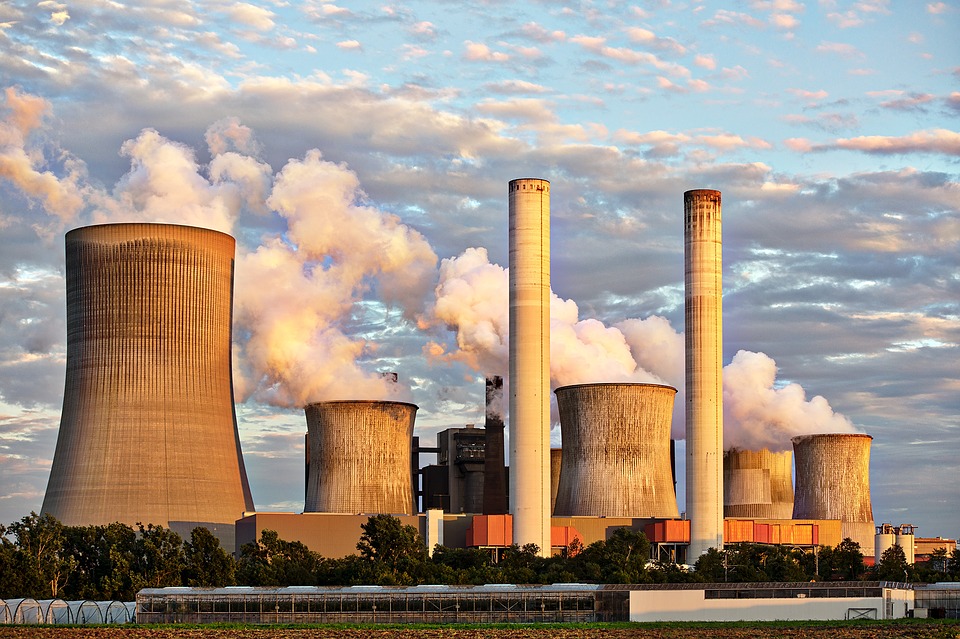Why South Africa must focus on renewable energy instead of increasing coal-fired energy
South Africa’s power utility, Eskom is currently under pressure as the country receives 90 percent of its electricity from coal-fired power plants and consequences are severe as air and water pollution lead to serious illness and death among residents.

The African Development Bank is committed to develop a blueprint for a pan-continental electricity network and market in association with the African Union Development Agency-NEPAD. The agreement to create a Continental Power System Master Plan between the African Development Bank and African Union Development Agency-NEPAD (AUDA-NEPAD) was unveiled during the end of November last year on the sidelines of Programme for Infrastructure Development (PIDA) Week held in Cairo. During the alarming hours of global warming and climate change, when the African Development Bank (AfDB) is giving its endeavour by lending money to several African governments to focus on renewable energy, South Africa is digging opportunities to augment coal-fired energy across the nation.
Why it’s dangerous to be a resident of Mpumalanga
Mpumalanga in eastern South Africa is one of the planet’s most air-polluted regions due to the mining industry and plant power stations. According to an analysis of satellite imagery released by Greenpeace in October 2018, Mpumalanga has the largest single area infected by the deadly air pollutant nitrogen dioxide. Greenpeace Africa revealed that out of satellite data across six continents, Mpumalanga emerged as ‘the world’s largest NO2 hotspot’. The area is home to a dozen coal-fired power stations, operated by Eskom, the South African electricity public utility.
South Africa’s power utility, Eskom is currently under pressure as the country receives 90 percent of its electricity from coal-fired power plants and consequences are severe as air and water pollution lead to serious illness and death among residents. Most of the power stations are coal-fired that create severe pollution killing over 2,000 people a year. Even the arable land is almost lost to mines.
A fenced-off electricity substation is located on the right side of the main street of a dilapidated village of Johannesburg. The area has a red sign warning of pollutants. On its left, a power plant emits severe emissions from burning coal into the air. Eskom owns both the power stations. For decades, many people and families complained about the severe pollution but Eskom has not taken any actions. People living there and nearby are severely suffering from multiple diseases like respiratory illness, lungs cancer, heart attacks, repeated miscarriages etc. According to the local people, there is no point to keep complaining as he or she gets labelled as a person who just wants to start the conflict.
A satellite data-study by Greenpeace accomplished between June and August 2018 revealed Mpumalanga suffered the worst NO2 power plant pollution on the planet. In another study, Greenpeace revealed that emissions such as sulphur dioxide (SO2), particulate matter and mercury were causing deaths from respiratory disease, strokes and heart attacks even beyond Mpumalanga. Another study estimated that over 2,000 South Africans die prematurely from power plant pollution.
Government seems reluctant on climate issues and citizens’ health
Derek Hanekom, the country’s then-acting environment minister quietly doubled the sulphur dioxide emission limits for existing coal plants by 2020 by violating the law without seeking public comments on the alterations. However, two local environmental groups filed a separate lawsuit to force the government in enforcing its own limits.
On the other hand, the government of South Africa announced in October 2019 that the country would augment its use of coal-fire energy. The Minister of Mineral Resources, Gwede Mantashe said that coal would continue to play a significant role in electricity generation while revealing the long-awaited Integrated Resource Plan. The 10-year plan includes increasing South Africa’s current 47,000 megawatts of energy by 1,500 megawatts from coal, 2,500 megawatts from hydro, 6,000 megawatts from solar and 14,400 megawatts from wind. According to him, coal would contribute 59 percent of the country’s energy as there is an abundance of resource and coal-fired power plants are going to be around for a long time.
Is renewable energy a solution?
Despite South Africa’s potential for renewable energy, the government is always in support of Eskom’s expansion plan of its coal-fired power plants with showing no mercy to the climate and citizens. Instead of inviting players specialised in renewable energy, the government is all set to increase the number and production of coal-fired power plants. In sooth, the cost of air pollution on human health in South Africa is not known. Fine particulate matter (PM) is one of the most lethal pollutants and higher concentrations are known to cause increased mortality. When solid or liquid fuels are burnt, a fine dust called PM 2.5 is created, which is the main cause of several heart diseases and respiratory problems.
An in-depth research on South Africa’s electricity system (by academics based at the LUT University in Finland) shows that transitioning to almost 100 percent renewable energy by 2050 could create 200,000 more jobs by 2035. Apart from this, the transition will lower the cost of energy by 25 percent, save 196,000,000,000 litres of water per year and make the country’s energy system more reliable, which mean no more rolling blackouts!
(Disclaimer: The opinions expressed are the personal views of the author. The facts and opinions appearing in the article do not reflect the views of Devdiscourse and Devdiscourse does not claim any responsibility for the same.)
Also Read: Is Japanese ‘Mottainai’ a valid solution to today’s waste management system?
- FIRST PUBLISHED IN:
- Devdiscourse










